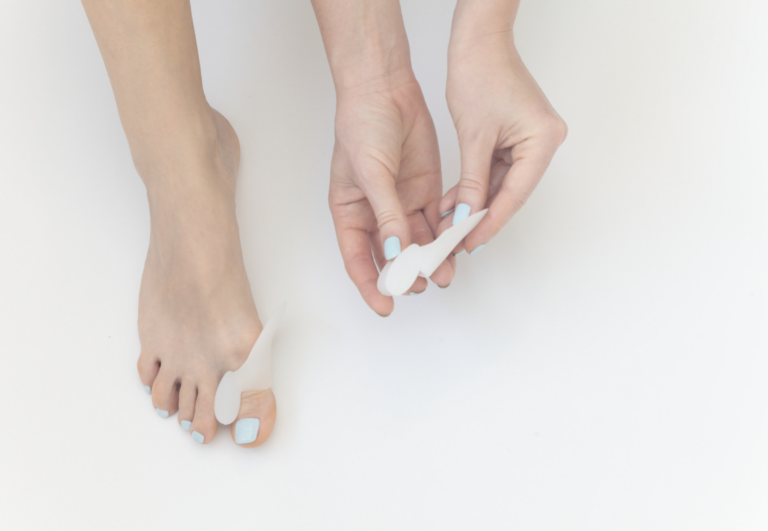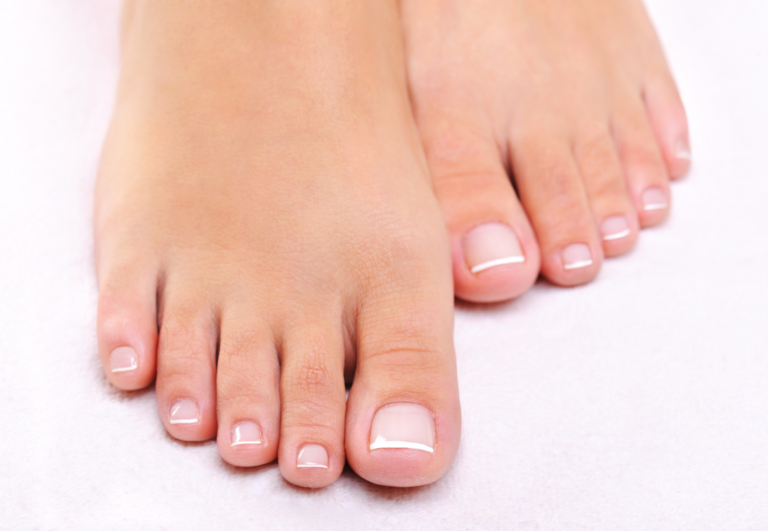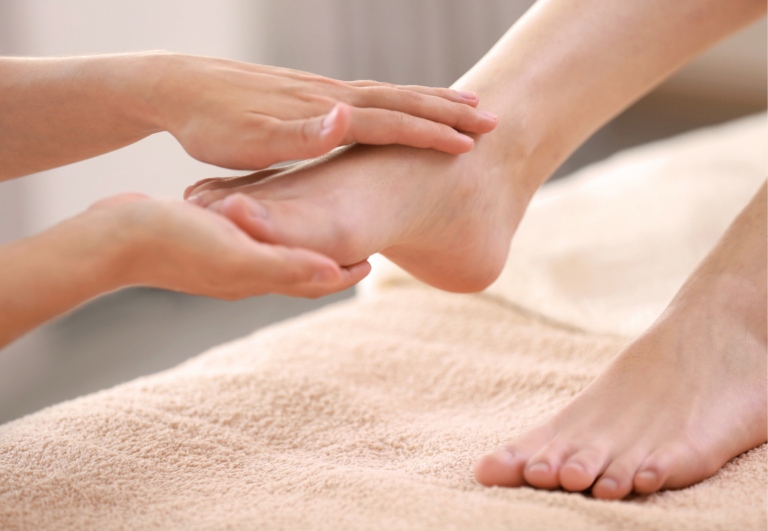How to Use Toe Spacers for Diabetic Foot Care: A Guide to Improving Circulation and Comfort
As someone well-versed in the application of toe spacers, I find that these simple devices can be especially beneficial for individuals managing diabetes. Proper diabetic foot care is crucial as it can help prevent serious complications such as ulcers or even amputation. Toe spacers help by providing proper alignment and reducing pressure between toes, which is important in maintaining foot health for those with diabetes.
I’ve learned that consistent use of toe spacers can promote better circulation and reduce the risk of corns and calluses, which are often harder to manage for people with diabetes due to their vulnerability to infection. In addition, well-placed toe spacers can enhance comfort when walking, a significant benefit given the sensitivity issues many individuals with diabetes experience in their feet.
Managing diabetes requires attention to detail, and so does selecting the right toe spacers. They come in various materials and sizes, and finding the right fit is key to reaping the benefits. They should be used as part of a daily foot care routine that includes checking for abrasions, managing blood sugar levels, and wearing appropriately fitting shoes. It’s not just about using them, but making them part of a comprehensive approach to foot health.
The Role of Toe Spacers in Diabetic Foot Care
Toe spacers can be pivotal in managing foot health, especially for individuals with diabetes. They are helpful in maintaining proper toe alignment, which is crucial for enhancing blood flow and reducing pain.
Types of Toe Spacers
Toe spacers are usually crafted from silicon or gel materials, providing a balance of comfort and effectiveness. They come in different styles:
- Single-toe spacers fit between two toes.
- Full-foot versions separate all the toes at once.
Here’s a brief overview of the characteristics of each material:
| Material | Characteristics | Comfort Level |
|---|---|---|
| Gel | Soft, flexible, contouring to foot | High |
| Silicon | Firmer support, maintains shape | Moderate to high |
Pads are another form of spacers, though less structured, offering a cushioning placement between toes.
Benefits for Diabetic Feet
For diabetic individuals, toe spacers can be particularly beneficial due to their role in:
- Improving blood flow: Proper spacing between the toes can help with circulation, which is essential for diabetic foot health.
- Reducing pain and correcting toe deformities: By keeping toes aligned, spacers can alleviate discomfort caused by bunions, hammertoes, and other toe deformities.
It is important to select toe spacers that offer the right fit and comfort for your feet, as ill-fitting toe spacers could potentially cause more harm than good. Regular use of appropriately fitted toe spacers, in combination with proper diabetic foot care practices, can contribute significantly to overall foot health and comfort.

Proper Use of Toe Spacers
Toe spacers can be integral to diabetic foot care by promoting proper toe alignment and reducing pressure on the feet. Their correct usage assists in managing foot deformities and enhancing comfort while walking.
Steps for Safe Application
To ensure that toe spacers are used effectively, follow these specific steps:
- Clean your feet thoroughly to prevent any potential infection.
- Dry your feet completely to ensure the toe spacers adhere well.
- Inspect your feet for any open wounds or sores. If such conditions are present, hold off on using toe spacers and consult a healthcare provider.
- Take the toe spacer and gently place it between the affected toes. The device should fit snugly, but not cause discomfort.
- Wear the toe spacers for a short time initially to allow your feet to adjust.
- Gradually increase the duration as your feet become accustomed to the spacers.
- Ensure that your footwear is roomy enough to accommodate the spacers while walking.
When to Consult a Podiatrist
It’s critical to have professional guidance on the proper use of toe spacers, especially for individuals with diabetes. Consult a podiatrist:
- If you’re unsure of the correct size or type of toe spacer for your needs.
- If you experience any pain or adverse reactions to the spacers.
- To develop a comprehensive foot care plan, which may include the use of toe spacers, exercises, and appropriate footwear recommendations.
By working closely with a healthcare provider, you can ensure that toe spacers are a beneficial addition to your diabetic foot care routine.
Integrating Toe Spacers with Overall Diabetic Foot Care
As someone experienced in the application of toe spacers, I understand the importance of incorporating them into a diabetic foot care routine. These tools help maintain proper toe alignment, which can be crucial for individuals managing diabetes.
Daily Care Routine
In my daily routine, I start by gently washing my feet with mild soap to keep the skin clean and free from infection.
After carefully drying them, especially between the toes, I apply a good quality moisturizer to prevent dryness and cracking, while ensuring not to get lotion between my toes where moisture can lead to fungal infections. Introducing toe spacers at this stage helps in correcting alignment and avoiding pressure points that can lead to complications.
- Morning Ritual:
- Wash with mild soap
- Dry thoroughly
- Moisturize (excluding between toes)
Choosing the Right Footwear
Selecting proper footwear is paramount in diabetic foot care. I look for shoes that have ample room for toe spacers, ensuring they do not cause any unnecessary pressure on my toes. Shoes should have a wide toe-box and provide support without constricting circulation.
I sometimes consult a healthcare provider to find the best fit for my feet. Additionally, breathable, well-fitting socks, without tight elastic bands, complement the spacers and help in maintaining blood circulation.
- Footwear Checklist:
- Wide toe-box for spacer accommodation
- Supportive but not too tight
- Breathable socks without tight bands
Monitoring and Managing Blood Sugar
Keeping blood sugar levels controlled is critical because high blood sugar can cause damage to the nerves and blood vessels in the feet, leading to complications.
I consistently monitor my blood sugar and follow a diet and medication routine prescribed by my healthcare provider. This comprehensive management helps ensure that the benefits of using toe spacers are not undermined by underlying sugar levels causing harm to my feet.
- Blood Sugar Control Strategy:
- Regular monitoring
- Adhering to prescribed diet
- Taking medications as directed
Preventing Serious Foot Conditions
I understand that for people with diabetes, preventing foot conditions is crucial. The use of toe spacers can significantly aid in this effort by helping to maintain proper alignment and reduce pressure on the feet.
This can lead to fewer complications such as foot ulcers, infections, and ingrown toenails. Let me guide you through the essentials of regular screening and lifestyle adjustments to minimize the risks associated with diabetic foot complications.
Regular Screening and Examinations
Regular foot check-ups are vital for early detection of potential issues. I recommend:
- Daily Self-Examination: Inspect your feet every day for blisters, sores, cuts, or ingrown toenails. Use a mirror or ask for help if you can’t do it yourself.
- Professional Screenings: Have your feet examined by a healthcare provider at least once a year, or more frequently if recommended.
Lifestyle Adjustments to Reduce Risks
Modifying certain lifestyle factors can help prevent foot problems:
- Stop Smoking: Smoking can further reduce blood flow to your feet, impairing healing and increasing complications.
- Exercise Regularly: Aim for gentle, non-impact exercises to improve circulation.
- Diet: Keep your blood sugar within target ranges by following a balanced diet.
By incorporating toe spacers into your foot care routine along with these strategies, you’re taking affirmative steps to prevent serious diabetic foot conditions.
Overview of Diabetic Foot Complications
Diabetic foot complications are a major concern for those with diabetes, arising from a combination of neuropathy and poor circulation which can lead to serious issues like ulcers and infections.
Identifying Risk Factors
Individuals with diabetes should stay alert to risk factors that contribute to foot complications. It’s important to recognize that uncontrolled blood sugar levels can increase the likelihood of developing problems.
- Neuropathy: Nerve damage causing loss of sensation in the feet, often leading to an inability to feel injuries or irritations.
- Poor Circulation: Reduced blood flow makes it hard for foot wounds to heal and increases the risk of infection.
Common Foot Problems in Diabetes
Diabetic foot disease encompasses several foot conditions commonly found in people with diabetes. These conditions can exacerbate one another, leading to a cascade of foot health issues.
- Ulcers: Open sores that develop most often on the bottom of the foot. Without proper treatment, ulcers can lead to lower extremity amputations.
- Calluses and Corns: Thickened skin that can cause ulcers if too much pressure is applied.
- Infections: Minor cuts or blisters can become infected, which in severe cases may result in gangrene.
- Charcot Neuroarthropathy: A weakening of the foot’s bones that can occur if neuropathy is present.
- Amputation: Sometimes necessary if infections are severe and cannot be controlled.
Using toe spacers can be beneficial in maintaining proper alignment of the toes, providing relief from the pressure caused by corns and calluses, and potentially preventing complications that lead to ulcers. When integrating toe spacers into diabetic foot care, it is crucial to do so with mindfulness of these risks and complications.





